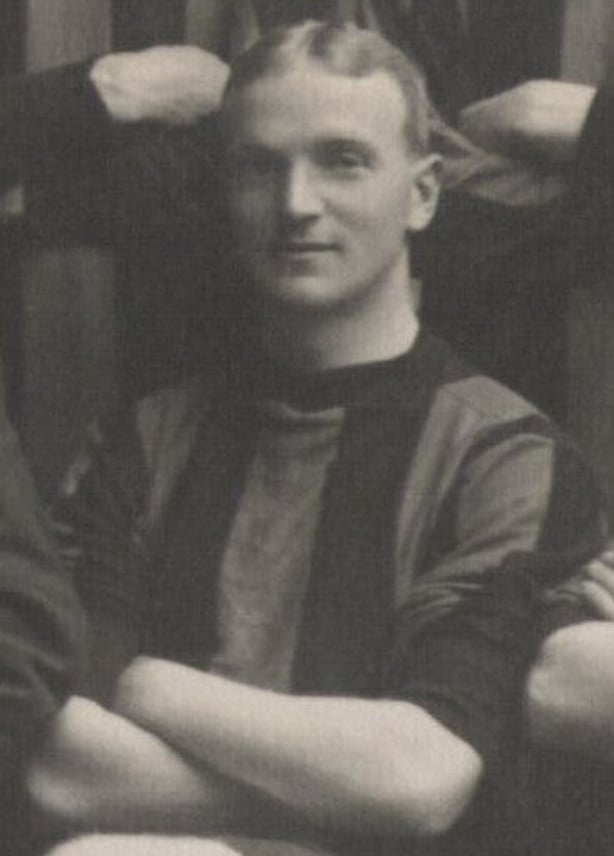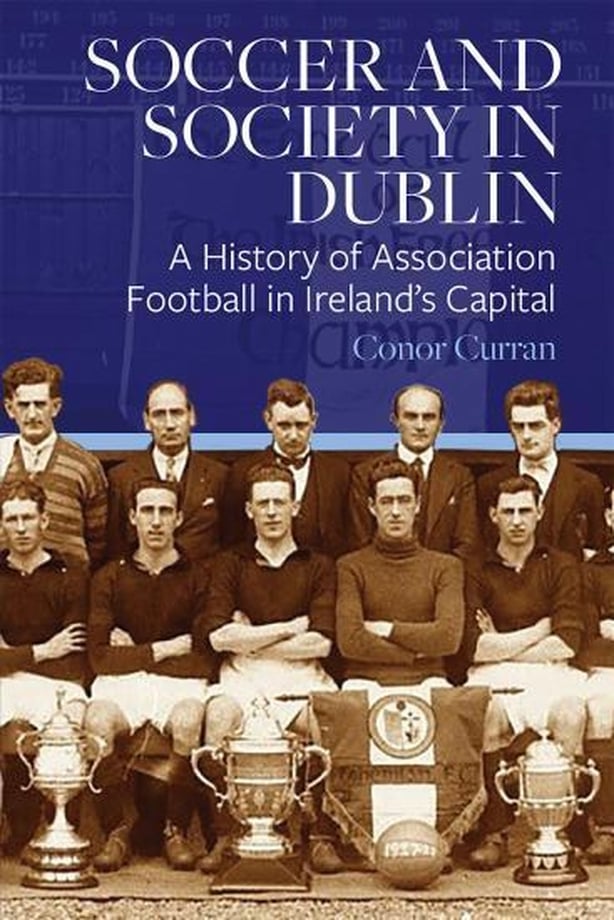Analysis: treatment of injuries which occured in 1920s' soccer matches, often caused by poorly maintained pitches, left a lot to be desired
By Conor Curran, TCD
In the early 20th century, the treatment of sports injuries was rudimentary, even at the highest levels of Irish soccer. The poor state of pitches in Dublin was a factor in injuries suffered by players, with Glasnevin FC critical in the press of Strandville FC's ground in 1925 as a result of injuries received by their players there.
Playing through injuries was not uncommon. Val Harris was said to have played 'almost on one leg for about 15 years' following a knee injury he sustained for Everton against Tottenham Hotspur in 1910. By the end of his career in England, Harris was walking with a limp, but later continued to play for Shelbourne having returned to Dublin during the First World War.
One reporter noted of a cup match between Drumcondra and Athlone in 1926 that 'McCabe defended the Athlone posts contrary to his doctor’s orders. The man was a cripple with sciatica. His play in the circumstances was little short of heroic.’ In January 1928, it was noted in the press that Joe Leonard of Shamrock Rovers was ‘all right again for the present, but may have to undergo an operation at the end of the season for his injuries.’

By the middle of the 1920s, a first aid hut was operational at the Fifteen Acres in Phoenix Park. Clubs using the Phoenix Park for matches had to pay a penny a week to pay off the cost of building a railing around the ambulance hut there, which one reporter felt was ‘ridiculous’ given that it would take years for them to pay off when it might have been paid in full sooner.
The availability of emergency treatment varied. Following a collision which led to a player acquiring a broken leg in a match between St Kevin’s and Grange at Sallynoggin in April 1926, ‘the game was stopped immediately and all available first-aid appliances used until the ambulance arrived and brought him to Monkstown Hospital.’ But receiving treatment externally remained an issue, with one reporter noting how an unnamed hospital had refused to send an ambulance to assist a player who had broken his leg at a junior match in Blanchardstown in February 1927.
Some players undoubtedly enjoyed lengthy spells playing in Dublin but keeping physically well enough to play was certainly a challenge. One Jacob's player, Scott, was reported to have been in his 27th year of soccer in 1922 and made his first appearance in a final that year. Players were advised in the press to ‘use Rexall Embrocation freely and often’ in the mid-1920s ‘to keep fit’, with the product available in at least one Dublin chemist.

Charlie O'Hagan, a Donegal-born football migrant who temporarily became editor of Football Sports Weekly in that decade, also published his own tips on training and preparation. These included taking a cold bath after his own morning training routine, which included skipping and shadow-boxing. However, he had little to say about dealing with injuries.
Some clubs did utilise machinery to treat injuries and at least one player saw the business opportunities which came with the treatment of injured players. In September 1926, Bohemian full-back CP Reddy was said to be ‘busy installing new electric massage appliances in clubs’ which were reported to be ‘a great asset for training purposes.’ The following year, Dr Willie Hooper offered general tips in Football Sports Weekly in a front-page article entitled ‘How to Play the Game.’ He advised players to keep themselves fit, avoid alcohol, go to bed early and to rest up before matches.
The treatment of sports injuries in general remained quite basic for much of the 20th century
The St John's Ambulance Brigade was an important asset to Dublin’s leading soccer clubs at the time. In May 1927, the Free State League title decider between Shamrock Rovers and Drumcondra at Milltown was also said to also be ‘a "benefit" for the St John Ambulance Brigade in Ireland, whose aid has always been unsparingly given, not only to soccer, but to every branch of sport.’ By the end of the 1926-7 season, the organisation was said to have ‘rendered invaluable service’ to soccer in Dublin.
Given the physical demands of match preparation, even some trainers suffered. In July 1927, Bohemians trainer Charlie Harris was said to be ‘troubled with a strained muscle in his left arm’ and attended Dr Burke at the Richmond hospital for treatment.

Players also received benefit matches, particularly when they had received serious injuries on the pitch which meant retirement or time off work. Leaving the country to take up positions abroad could also be a cause for a benefit match, although poor weather conditions at times lessened the attendance and the finance gathered. In December 1927, Dalton, a Shamrock Rovers' reserves player, was said to be on the injured list and 'in the trainer’s hands at Milltown.’ Subscriptions were taken at that time in Football Sports Weekly for injured players who were ‘not receiving any benefit.’
The treatment of sports injuries in general remained quite basic for much of the 20th century. In February 1985, Dr Moira O'Brien, medical officer of the Irish Olympic Council, presented a report to the government in which she highlighted that the system of sports injury treatment was ‘inadequate due to lack of resources and training both at voluntary and statutory level.’ However, with the advent of sports injury clinics and the availability of physiotherapy in the 1980s and 1990s, a greater level of treatment was becoming available for Ireland’s sports men and women.
Soccer and Society in Dublin: A history of Association football in Ireland's Capital by Conor Curran is published by Four Courts Press.
Dr Conor Curran is an Irish Research Council Government of Ireland Postdoctoral Research Fellow in the School of Education at TCD.
The views expressed here are those of the author and do not represent or reflect the views of RTÉ

